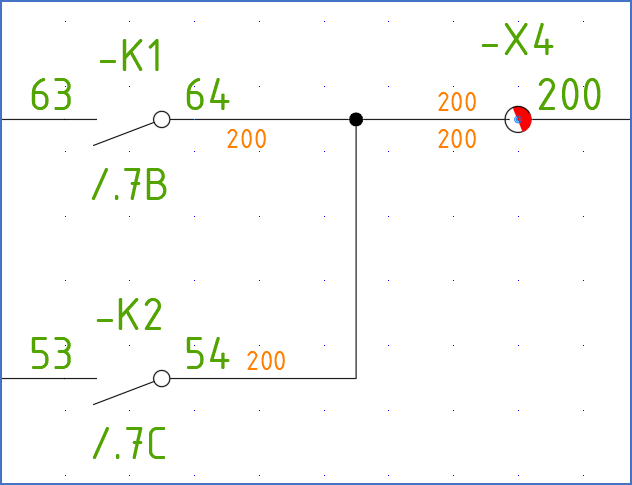|
<< Click to Display Table of Contents >> Suffix to separate identical numbers in the same node |
  
|
|
<< Click to Display Table of Contents >> Suffix to separate identical numbers in the same node |
  
|

Figure 484: The "Suffix to separate identical numbers in the same node" parameter is placed above "Separator character for suffix".
If the Suffix to separate identical numbers in the same node parameter is activated, and several wires in the same wire-chain (electrical node) get identical wire numbers, a suffix will be added to the wire numbers to avoid the ambiguity that would otherwise occur.
If you, however, have deactivated this parameter, ambiguities can arise, which in turn can have several negative consequences. Revision comparisons and freezing of existing wire numbers will for instance not work properly.
If you have chosen to number wires to terminals with terminals numbers, multiple wires within the same wire-chain (electrical node) may get identical wire-numbers. For several reasons, that is unwanted. It will of course constitute an ambiguity in the documentation, but even worse is that a freezing of existing wire-numbers is made impossible due to the fact that the ambiguous wire numbers will be considered erroneous.
The Suffix to separate identical numbers in the same node feature elegantly solves that dilemma.
A typical example of when this problem may arise, is if you have two wires connected to the same side (internal or external) of the same terminal, and you have chosen wire numbering according to terminal numbers. You would then end up with both wires having the same wire number. Since both wires would be part of the same wire-chain, an error would have been created. An automatically generated suffix can help distinguishing between the the two wires and avoid the error. Two wires from terminal –X4:200 will for example then get wire numbers 200 and 200.1 respectively.

Figure 485: Two wires in the same wire-chain have received identical wire-numbers, which constitute an error.

Figure 486: A suffix on one of the wire-numbers solves the conflict.